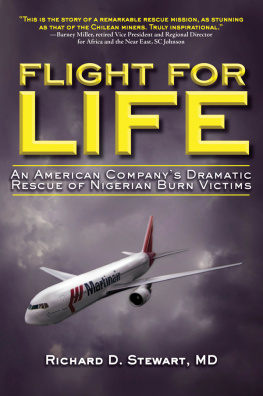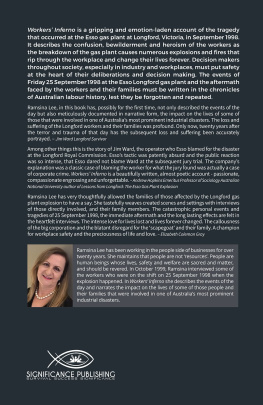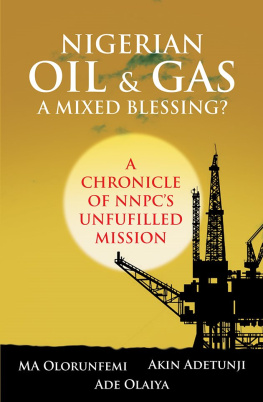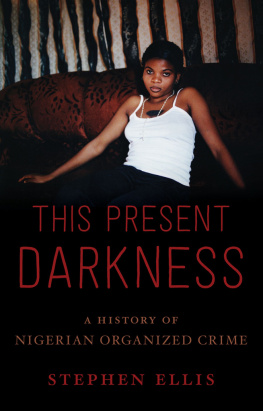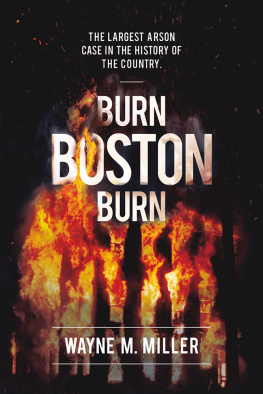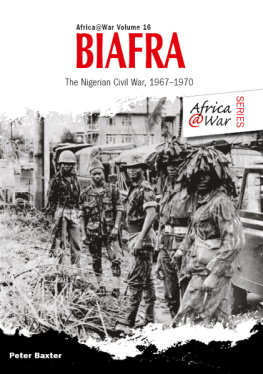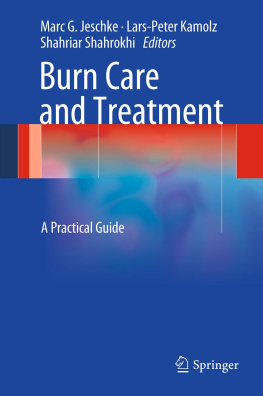Copyright 2012 by Richard D. Stewart, MD
All Rights Reserved. No part of this book may be reproduced in any manner without the express written consent of the publisher, except in the case of brief excerpts in critical reviews or articles. All inquiries should be addressed to Skyhorse Publishing, 307 West 36th Street, 11th Floor, New York, NY 10018.
Skyhorse Publishing books may be purchased in bulk at special discounts for sales promotion, corporate gifts, fund-raising, or educational purposes. Special editions can also be created to specifications. For details, contact the Special Sales Department, Skyhorse Publishing, 307 West 36th Street, 11th Floor, New York, NY 10018 or .
Skyhorse and Skyhorse Publishing are registered trademarks of Skyhorse Publishing, Inc, a Delaware corporation.
www.skyhorsepublishing.com
10 9 8 7 6 5 4 3 2 1
Library of Congress Cataloging-in-Publication Data is available on file.
ISBN: 978-1-61608-227-7
Printed in China
For the late patriarch whose philosophy of life and business ethics
set the stage for this dramatic rescue mission
Samuel C. Sam Johnson, chairman emeritus of Johnson Wax,
who died of cancer in May 2004 at age seventy-four.
CONTENTS
Prologue Disaster Strikes:
Lagos, NigeriaMonday, June 12, 1982
Chapter 1 The Calm before the Storm: Racine,
WisconsinTuesday, 5:47 AM
Chapter 2 Setting Things in Motion:
RacineTuesday, 9:15 AM
Chapter 3 Can We Get the Help We Need?
RacineTuesday, 10:15 AM
Chapter 4 Were on the Way:
OHare International Airport,
ChicagoTuesday, 6:00 PM
Chapter 5 We Have a Bit of a Problem, Gentlemen:
LondonWednesday, 9:05 AM
Chapter 6 Arriving at the Scene:
LagosThursday, 9:00 AM
Chapter 7 No African Hospitals Can Help:
LagosThursday, Noon
Chapter 8 Can We Get Help from Europe?
LagosThursday Afternoon
Chapter 10 Looking for Miracles:
LondonFriday, 3:00 AM
Chapter 11 Martinair to the Rescue:
LagosSaturday, 2:00 AM
Chapter 13 Over the Atlantic:
Saturday Afternoon and Evening
Chapter 14 Touchdown in Detroit, Michigan:
Saturday, 9:15 PM
Chapter 15 Ann Arbor, Michigan:
Sunday Morning
Chapter 16 Hoping for Miracles:
Ann ArborSunday Afternoon
Chapter 18 A Visitor from Nigeria:
Ann ArborJuly and August
Chapter 19 The Final Hurdle:
Ann ArborNine Months Later
In the twilight of a doctors life, its a joy to remember
the thrilling adventures of saving those
who desperately needed medical care.
R. D. S.
CHAPTER 1
The Calm before the Storm:
Racine, WisconsinTuesday,
5:47 AM
I slipped into my jogging outfit, did my warm-up exercises, and began the two-and-a-half-mile jog along the shores of Lake Michigan. Overhead a solitary seagull was soaring in large circles against the cloudless blue of the morning sky. A faint breeze ruffled the tips of the waves, causing sparkles of sunlight to be reflected as the waves rolled toward the shore. The tranquil beauty surrounding me sent my spirits soaring.
As I jogged, with the stirring melodies of The Sound of Music resonating through my Walkman, I daydreamed about the futurewriting a new chapter on high-altitude sickness for Harper & Rows Practice of Medicine (for which I was one of the editors); creating a new sequence of teaching slides on toxicology to better engage my medical students, interns, and residents; and, to top the list, planning a wilderness canoe and camping trip in northern Wisconsin with my wife, Marythe love of my lifeand our thirteen-year-old daughter, Beth, the only one of our three children still living at home.
As a fifty-five-year-old physician, all was right in my world. Seven days earlier, I had joyously celebrated my thirtieth wedding anniversary by dancing until midnight with the lady who for me had the most spontaneous smile and enthralling deep blue eyes of any creature on the planet. In the field of medicine, my true academic love, I was entering my sixteenth year as a professor of internal medicine and medical toxicology at the Medical College of Wisconsin, Milwaukee; and I was in my fifth year as the corporate medical director of SC Johnson, a large American corporation that got its start making Johnson Wax and graduating into other household chemical products. In that role, I had two main responsibilitiesoverseeing product toxicology and establishing a model emergency and preventive medicine facility for its three thousand U.S. employees. I had absolutely no responsibility for and little knowledge about the fifty-four foreign Johnson subsidiaries, including the one in Nigeria. In fact, all I knew about Nigeria in 1982 was that it was an oil-rich African country plagued by political unrest and economic distress, as reported in Time magazine and The Wall Street Journal.
That morning I had no inkling that the telephone call I was about to receive would interrupt the serenity in which I was basking and propel me into the most hair-raising medical adventure of my career. After breakfaston what was to prove to be an unforgettable dayI drove four miles to the Johnson Medical Center, which was situated in building 43E in the heart of the Johnson production and shipping complex located on a large plot of land on the western fringe of Racine. I parked and hurried up the concrete steps leading to the buildings inviting entrance with its huge glass doors. Inside, the center was bustling with activity. All the nurses were smiling, a good sign that everything was running on schedule. The ER suite was emptyanother good sign. As I passed the reception area on the way to my office, I saw several employees busily updating their medical histories prior to their annual examination.
SC Johnson, at the time, was one of the worlds leading manufacturers of chemical specialty products for home, auto, and personal use as well as for commercial maintenance and industrial markets. The majority of the companys stock was privately owned by the family, and its profits were rumored to be astronomical during bull markets.
I had been working for the company for ten years. In 1972, Sam Johnson, the CEO and holder of the majority of the stock of the private multinational company, invited me to use the consulting time I was allowed by the Medical College of Wisconsin to oversee their product toxicology operation. At the time, all I knew about the Racine facility was that it was privately owned and that the building was a Frank Lloyd Wright design.
During our get-to-know-each-other session, Sam Johnson and I were seated in comfortable chairs in his ultramodern office. For me this was a unique experience. Sam Johnson was the first billionaire with whom I had ever conversed. He was a muscular balding fifty-four-year-old gentleman with a warm smile and sparkling blue eyes. He was dressed in a dark gray business suit and wore comfortable-looking black loafers. During our conversation, I learned that both of us had enlisted in the U.S. Air Force and had qualified for pilot training. Apparently, we both wanted the thrill of soaring high above the earth in the vast freedom of the sky.
Luckily, I had qualified for pilot training at seventeen at Keesler Field near Biloxi, Mississippi, three months before World War II ended. Born on March 2, 1928, Sam had earned a bachelors degree in economics from Cornell University and an MBA from Harvard Business School before enlisting in the U.S. Air Force and qualifying for pilot training. At seventeen, Sam had learned to fly and did so for the rest of his life. He served as a first lieutenant and intelligence officer but did not see combat. Discharged in 1954, he joined the family company then headed by his father, H. F. Johnson Jr.

